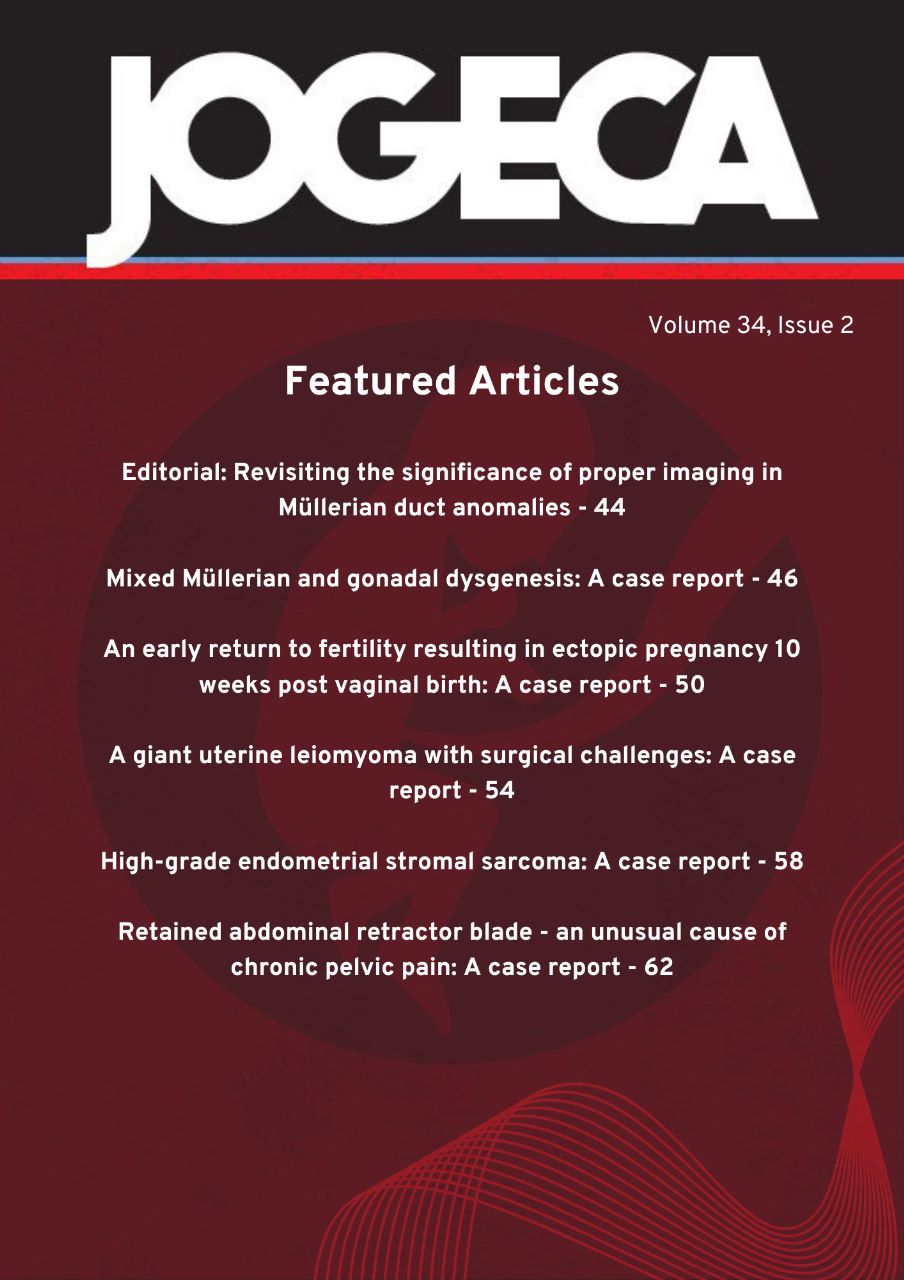Prevalence and pattern of blood and blood component utilization at the Kenyatta National Hospital maternity unit in 2022-2023: A cross-sectional study
DOI:
https://doi.org/10.59692/jogeca.v36i1.164Keywords:
Blood, Components, TransfusionAbstract
Background: Blood and blood component transfusion plays a pivotal lifesaving role. Adequate amounts significantly reduce maternal morbidity and mortality. This study aimed to assess the prevalence and pattern of blood and blood component utilization among women managed at the Kenyatta National Hospital (KNH) maternity unit in 2022-2023.
Methods: This was a cross-sectional study targeting women admitted to the KNH maternity unit. Participants were recruited through consecutive sampling. A data abstraction chart was used for data collection. The study variables included proportions of patients who required blood or blood components, indications for transfusion, number of units availed against those requested, and outcomes of the participants. To determine the prevalence of transfusion, the proportion of participants who received blood or blood components was calculated over the admissions. To determine the percentage per indication for transfusion, a particular indication was calculated over the total number of indications and expressed in percentages, and the need was calculated as the total need per blood request generated. Continuous data were analyzed for mean and standard deviation. Frequencies and percentages were calculated for variables with categorical data.
Results: Among 5567 admissions, 344 participants who needed blood and blood components were sampled over 7 months from October 2022. This represented a prevalence of 6.2%. Of this prevalence, cesarean deliveries made up 3%, SVD 1.4%, and miscarriages accounted for 0.5% among others. Postpartum hemorrhage was the most common indication (34.5%), with 65.4% of participants having their need for blood/blood components met. The deficit in blood units ordered was 12.4%. The majority (98%) were discharged home. While mortality was recorded at 2%.
Conclusion: The prevalence of blood/blood components transfusion was 6.2%. Postpartum hemorrhage remains the most common indication for blood transfusion. The need for blood and its components remains unmet both for the number of units and the type of component.
Downloads
Published
How to Cite
Issue
Section
Categories
License
Copyright (c) 2024 The Authors.

This work is licensed under a Creative Commons Attribution 4.0 International License.




